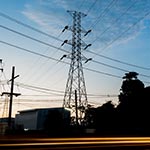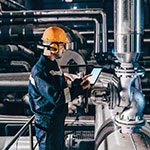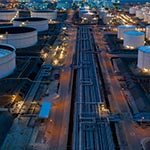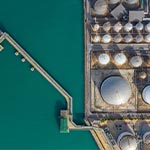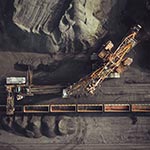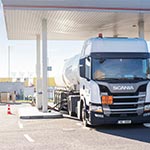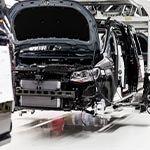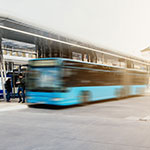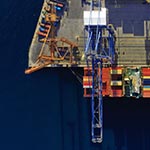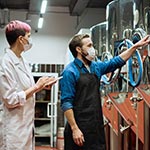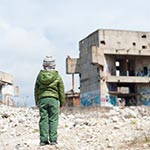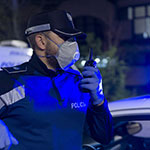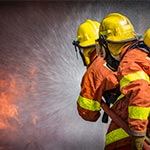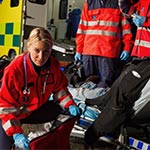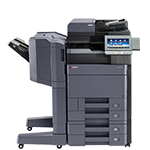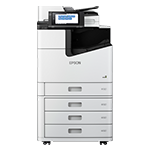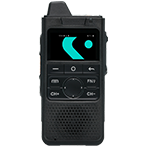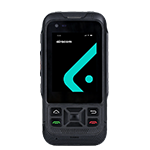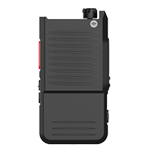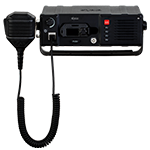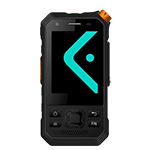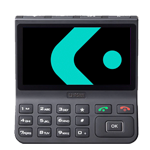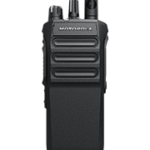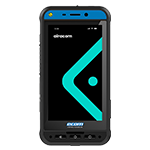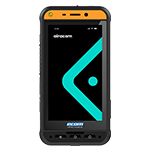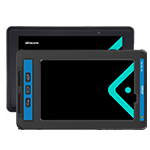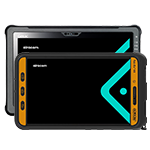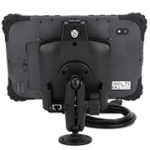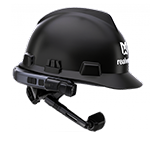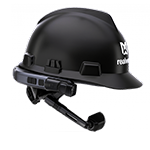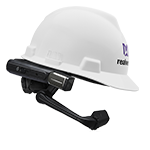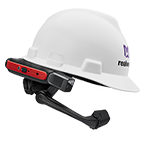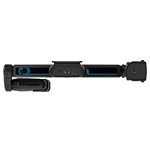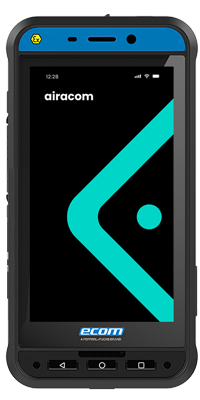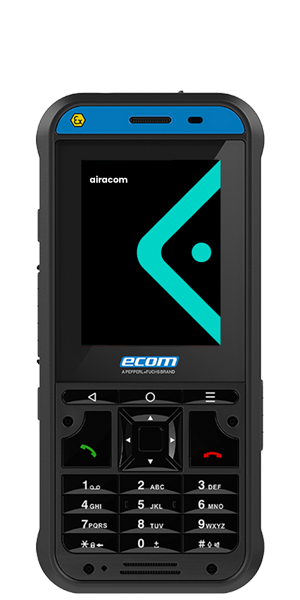Intrinsically Safe Certifications
What is intrinsically safe certification?
Product design, development, certification, and manufacturing must comply with various regulations and requirements worldwide to obtain I.S. certification and for equipment to be used within potentially explosive environments.
Intrinsically Safe (IS) certification refers to a safety standard that ensures electronic devices or equipment can be used safely in hazardous environments where flammable gases, vapours, or dusts may be present. The goal of IS certification is to prevent electrical equipment from generating sparks or heat that could ignite the flammable materials in the surrounding environment.
Exploring Intrinsic safety
Understanding intrinsic safety and the concept that defines the use of electrical equipment in hazardous areas
Intrinsic safety concept
Intrinsic safety is a concept that originated from the mining industry, where a simple electrical spark could ignite explosive gases. The concept focuses on designing electrical equipment to limit the amount of energy that could be released, thus preventing the ignition of flammable materials. This is achieved through the use of low voltage, low current, and energy limiting circuits that are designed to prevent the generation of sparks.
Why do they exist?
IS certifications are crucial in many industries, such as oil and gas, chemical, pharmaceutical, and mining, where hazardous environments are common. In these environments, even the smallest spark could lead to a catastrophic explosion or fire. Therefore, it is essential to ensure that all electronic devices or equipment used in such areas meet certain safety standards to prevent accidents and protect the workers.
What are they used for?
IS certifications are used for electronic devices or equipment that are designed to be used in hazardous environments, such as:
Handheld devices, including smartphones, tablets, and laptops
Sensors, transmitters, and receivers
Data loggers, cameras, and video recorders
Lighting equipment, including torches and headlamps
Electrical connectors and switches
How do they differ around the world?
IS certifications differ around the world, depending on the region or country. For example, in North America, IS certification is governed by the Factory Mutual Research Corporation (FM), a third-party testing and certification organisation. In Europe, IS certification is governed by the International Electrotechnical Commission (IEC), a global organisation that develops and publishes international standards for all electrical, electronic, and related technologies.
In the United States, the National Electric Code (NEC) outlines the requirements for IS certification. In Europe, the ATEX Directive (ATEX 114) and the IECEx Scheme provide the framework for IS certification.
The ATEX Directive covers the European Union and European Free Trade Association (EFTA) countries and sets the minimum safety requirements for equipment and protective systems used in hazardous environments. It divides hazardous areas into Zones, with different requirements for each zone.
The IECEx Scheme is a global certification system that provides a single certification for electrical equipment and systems used in explosive atmospheres. It aims to harmonize international standards for hazardous area equipment and facilitate international trade.
The Importance of Using Intrinsically Safe Equipment in Hazardous Areas
In hazardous areas, flammable gases, vapours, or dusts are present in the air in concentrations that could ignite. If an electrical spark or arc is generated in a hazardous area, it could ignite the flammable materials and cause a fire or explosion.
Intrinsically safe (IS) equipment is designed to prevent the ignition of flammable materials, even in the event of a fault. IS equipment is certified to meet specific safety standards, such as those set by the FM, IEC, ATEX, and IECEx.
There are several benefits to using IS equipment in hazardous areas, including:
Increased safety: IS equipment is designed to prevent the ignition of flammable materials, even in the event of a fault. This can help to protect people and property from fire and explosion.
Reduced risk of accidents: Using IS equipment can help reduce the risk of accidents in hazardous areas. This can lead to improved safety for workers and increased productivity.
Compliance with regulations: In many countries, there are regulations that require the use of IS equipment in hazardous areas. By using IS equipment, businesses can help ensure that they comply with these regulations.
How to choose IS equipment?
When choosing IS equipment, it is important to consider the following factors:
The type of hazardous area where the equipment will be used. Hazardous areas are classified into zones based on the probability of flammable materials being present in the air. Zone 1 is the most hazardous area and is where flammable materials are likely to be present during normal operation. Zone 2 is less hazardous than Zone 1 and is where flammable materials are not likely to be present during normal operation but could be present under abnormal conditions.
The level of protection that is required. There are three levels of IS protection: Ex i, Ex d, and Ex m. Ex i protection is the most stringent level of protection and is used in the most hazardous areas. Ex d protection is a less stringent level of protection and is used in less hazardous areas. Ex m protection is used for equipment that is not intrinsically safe, but that is used in a hazardous area in conjunction with intrinsically safe equipment.
The specific features that are needed for the application. When choosing IS equipment, it is important to consider the specific features that are needed for your workforce. For example, if the equipment will be used for voice communication, it is important to choose a device that has a built-in speaker and microphone. If the equipment will be used for data entry, it is important to choose a device that has a keyboard or touchscreen.
Explore Airacom’s range of intrinsically safe mobile devices and explosion proof cases designed for safe use across hazardous areas:
Maintenance of IS equipment
IS equipment must be regularly maintained to ensure that it continues to operate safely. This includes inspecting the equipment for damage and ensuring that it is properly calibrated.
Inspection: IS equipment should be inspected regularly for damage. This includes checking for cracks, dents, loose screws, and other signs of wear and tear. The equipment should be repaired or replaced immediately if any damage is found.
Calibration: Certain types of IS equipment should be calibrated regularly to ensure it operates within the safe limits of how the equipment has been designed. Calibration is the process of adjusting the equipment so that it measures accurately. This is usually done by a qualified technician from the manufacturer or an authorised repair agent on behalf of the equipment manufacturer.
Hazardous areas zones vs divisions, what is the difference?
A hazardous area is any area where flammable gases, vapors, or dusts are present in the air in concentrations that could ignite. If an electrical spark or arc is generated in a hazardous area, it could ignite the flammable materials and cause a fire or explosion.
Zones
Hazardous areas are classified into zones based on the frequency and duration of flammable gases or dust. These zones are classified as follows:
Zone 0: The most hazardous area. Flammable gases or dusts are present continuously or for long periods of time.
Zone 1: A hazardous area where flammable gases or dusts are present frequently.
Zone 2: A hazardous area where flammable gases or dusts are present only occasionally.
Divisions
Hazardous areas are also classified into divisions based on the likelihood of a flammable gas or dust explosion. These divisions are classified as follows:
Division 1: The most hazardous division. There is a high probability of an explosion occurring.
Division 2: A less hazardous division. The probability of an explosion occurring is lower than in Division 1.
Differences between European and US hazardous area classification systems
The European and US, hazardous areas classification systems, are similar, but there are some key differences. The main difference is that the European system uses zones to classify hazardous areas, while the US system uses divisions.
The European system divides hazardous areas into Zone 0, Zone 1, and Zone 2. Zone 0 is the most hazardous area, and Zone 2 is the least hazardous area.
The US system divides hazardous areas into Division 1 and Division 2 hazardous areas. Division 1 is the most hazardous division, and Division 2 is the least hazardous division.
In addition to the differences in zones and divisions, there are also some other differences between the European and US hazardous areas classification systems. For example, the European system uses different symbols to identify electrical equipment certified for use in hazardous areas.
IS certification testing
IS certification testing involves subjecting the electronic device or equipment to various tests to ensure it meets the safety requirements for use in hazardous environments. These tests include the ignition test, thermal test, impact test, and drop test, among others. The tests are designed to simulate the harsh conditions that the equipment may encounter in a hazardous environment and ensure that it does not generate sparks or heat that could ignite the flammable materials.
IS Certification markings
IS-certified electronic devices or equipment should be marked with the appropriate certification marking to indicate compliance with the safety standards. In North America, the FM marking is used, while in Europe, the ATEX and IECEx markings are used. The marking includes information such as the equipment category, zone or division, gas group, and temperature class.
FM Marking
The FM marking is used in North America to indicate that an electrical device or equipment has been certified by Factory Mutual (FM). FM is a global safety organization that provides certification services for a variety of products, including electrical equipment for hazardous areas.
ATEX Marking
The ATEX marking is used in Europe to indicate that an electrical device or equipment has been certified to the ATEX Directive. The ATEX Directive is a European Union directive that sets safety standards for electrical equipment used in explosive atmospheres.
IECEx Marking
The IECEx marking is used internationally to indicate that an electrical device or equipment has been certified to the IECEx System. The IECEx System is an international system for the certification of electrical equipment for use in explosive atmospheres.
Equipment Category
The equipment category indicates the type of IS equipment. There are four equipment categories:
Category I: Equipment for general use
Category II: Equipment for restricted areas
Category III: Equipment for special areas
Category IV: Equipment for intrinsically safe circuits
Zone or Division
The zone or division indicates the area where the equipment is intended to be used. There are three zones and two divisions:
Zone 0: The most hazardous area. Flammable gases or dusts are present continuously or for long periods of time.
Zone 1: A hazardous area where flammable gases or dusts are present frequently.
Zone 2: A hazardous area where flammable gases or dusts are present only occasionally.
Division 1: The most hazardous division. There is a high probability of an explosion occurring.
Division 2: A less hazardous division. The probability of an explosion occurring is lower than in Division 1.
Gas Group
The gas group indicates the type of flammable gas or dust that the equipment is designed to protect against. There are five gas groups:
Group IIA: Acetylene
Group IIB: Ethylene
Group IIC: Hydrogen
Group IID: Hydrogen sulfide
Group IIE: Natural gas
Temperature Class
The temperature class indicates the maximum surface temperature of the equipment. There are six temperature classes:
T1: 80°C
T2: 100°C
T3: 125°C
T4: 150°C
T5: 180°C
T6: 200°C
By understanding the meaning of IS certification markings, you can help ensure that you use safe and compliant electrical equipment in hazardous areas.
Benefits of intrinsically safe smartphones and tablets for engineers
There are several benefits to using IS mobile devices in hazardous areas, including:
Increased safety: IS devices help to reduce the risk of explosions, which can protect workers and property from harm.
Improved productivity: IS devices allow workers to stay connected and productive in hazardous areas, even where traditional electronics are prohibited.
Compliance with regulations: In many countries, there are regulations that require the use of IS equipment in hazardous areas. By using IS mobile devices, businesses can help to ensure that they are in compliance with these regulations.
Intrinsically safe smartphone and tablet range
There are a number of intrinsically safe smartphones and tablet models available on the market. Some of the most popular models include:
Global certification schemes
ATEX Certified
The European standard for the safe use of equipment where there is potential for an explosive atmosphere present.
IECEx Certified
The internationally accepted standard by organisations for the safe use of equipment within hazardous areas.
CSA Certified
The Canadian standard is widely adopted by companies in North America and meets North American Standards.
EAC Ex Certified
Is the Eurasian Conformity certification for organisations operating within the EAEU, including Russia.
InMetro Certified
Accreditation body of Brazil. Equipment must conform to INMETRO standards for use in hazardous areas.
KOSHA Certified
The Korean Occupational Safety and Health Agency. KOSHA. Required for all hazardous area safety equipment.
JNIOSH Certified
The Japanese standard and certification from the National Institute of Occupational Safety and Health.
SANS Certified
SANS is the South African National Accreditation System which governs the use of hazardous area devices.
Improve safety and efficiency with your hazardous area frontline workers
Protect your maintenance and inspection engineers working in hazardous areas with Airacom’s employee tracking and monitoring software. Our solution provides real-time tracking and analytics to optimise operations, increase accountability, and enhance safety and efficiency, ensuring the safety of your workforce.

